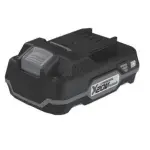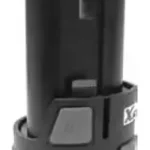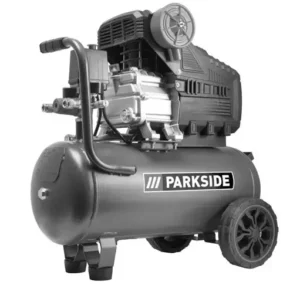
COMPRESSOR PKO 24 B2
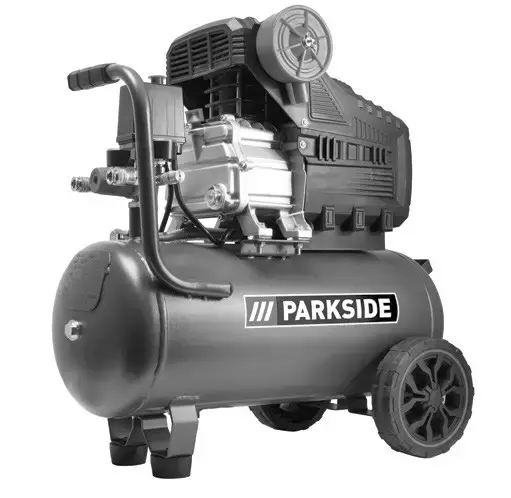
COMPRESSOR
Operating and Safety Instructions
Translation of Original Operating Manual
IAN 360588_2010
![]()
Before reading, unfold the page containing the illustrations and familiarise yourself with all functions of the device.
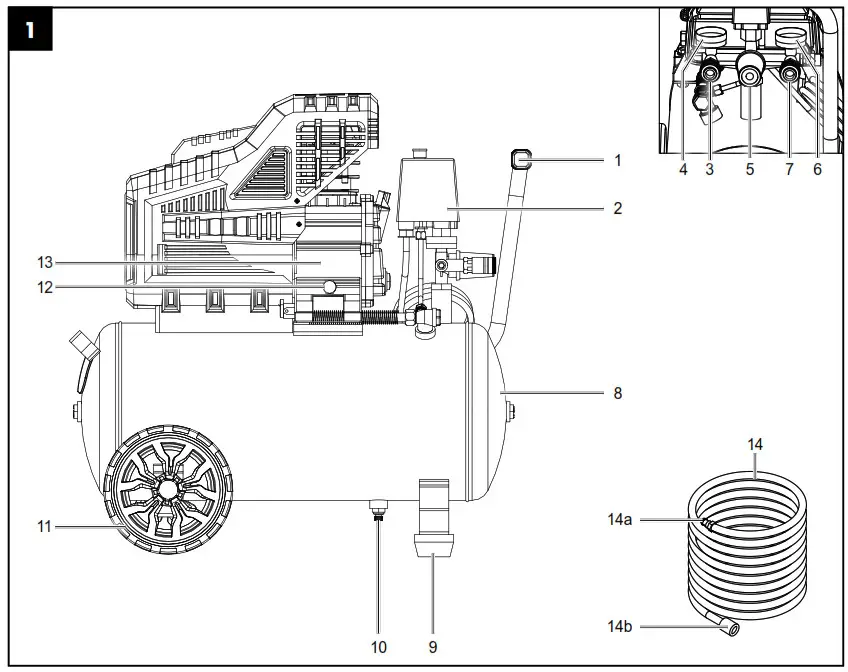
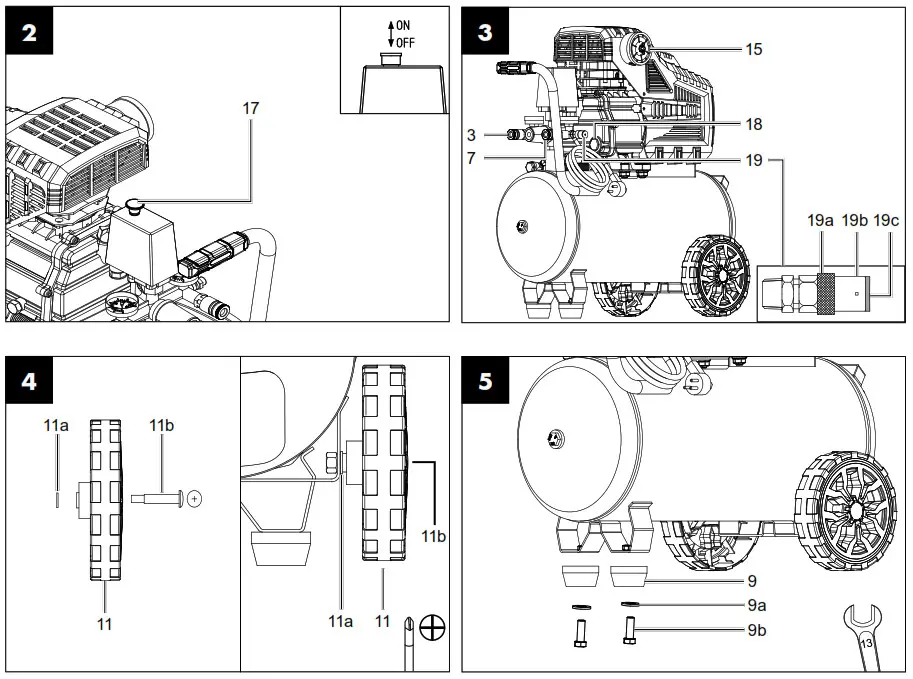
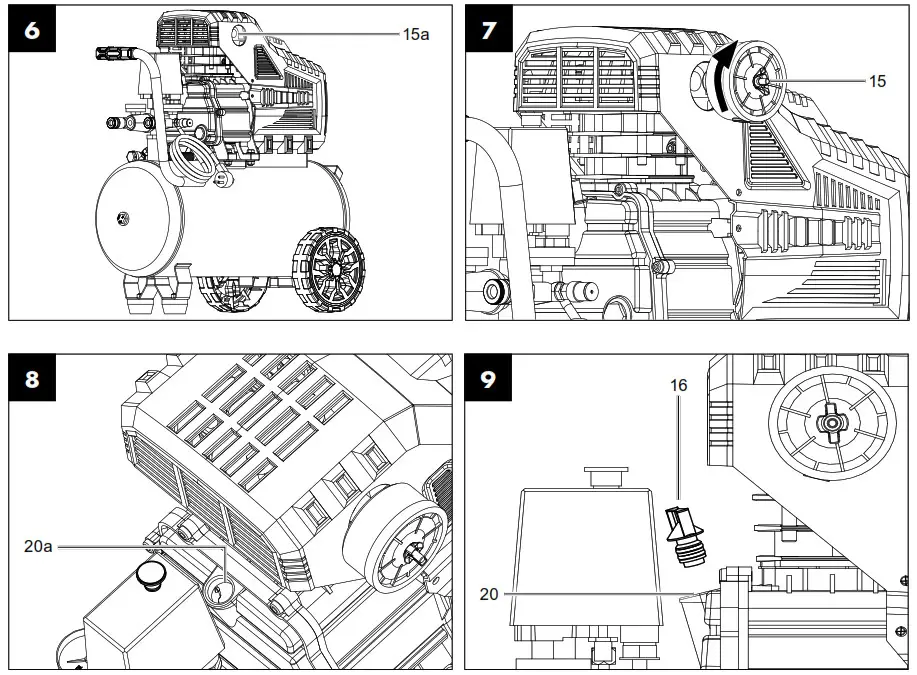
Explanation of the symbols on the device
| Read the operating and safety instructions before start-up and follow them! | |
| Wear hearing protection. Excessive noise can result in a loss of hearing. | |
| Warning against hot parts! (A fig. 11) | |
 |
Warning against electrical voltage |
 |
Warning! The equipment may start automatically without warning. |
 |
Attention! Prior to initial commissioning, check the oil level and replace the oil sealing plug! |
| Observe warnings and safety instructions! | |
 |
Sound power level specified in dB |
 |
Do not expose the device to rain! |
Introduction
Manufacturer:
scheppach
Fabrikation von Holzbearbeitungsmaschinen GmbH
Günzburger Straße 69
D-89335 Ichenhausen
Dear customer,
We hope your new tool brings you much enjoyment and success.
Note:
In accordance with the applicable product liability laws, the manufacturer of this device assumes no liability for damage to the device or caused by the device arising from:
- Improper handling,
- Non-compliance with the operating manual,
- Repairs carried out by third parties, unauthorised specialists.
- Installing and replacing non-original spare parts,
- Application other than specified,
- Failures of the electrical system in the event of the electrical regulations and VDE provisions 0100, DIN 57113 / VDE 0113 not being observed.
Please consider:
Read through the complete text in the operating manual before installing and commissioning the device. This operating manual should help you familiarise yourself with your power tool and teach you how to use it for its intended purpose. The operating manual includes important instructions for the safe, proper and economic operation of the machine, for avoiding danger, for minimising repair costs and downtimes and for increasing the reliability and extending the service life of the machine. In addition to the safety instructions in this operating manual, you must also observe the regulations applicable to the operation of the machine in your country. Keep the operating manual package with the power tool at all times and store it in a plastic cover to protect it from dirt and moisture. They must be read and carefully observed by all operating personnel before starting the work. The power tool may only be used by personnel who have been trained to use it and who have been instructed with respect to the associated hazards. The required minimum age must be observed. In addition to the safety instructions in this operating manual and the separate regulations of your country, the generally recognised technical rules relating to the operation of such machines must also be observed. We accept no liability for accidents or damage that occur due to a failure to observe this manual and the safety instructions.
Device description (fig. 1-12)
| 1. Transport handle | 14. Compressed air hose |
| 2. Pressure switch | 14a. Plug nipple |
| 3. Quick coupling (regulated compressed air) | 14b. Quick coupling |
| 4. Pressure gauge (set pressure can be read off) | 15. Air filter |
| 5. Pressure regulator | 15a. Transport lid |
| 6. Pressure gauge (vessel pressure can be read off) | 15b. Wing screw |
| 7. Quick coupling (unregulated compressed air) | 15c. Filter element |
| 8. Pressure vessel | 15d. Filter housing |
| 9. Supporting foot | 15e. Filter cover |
| 9a. Washer | 16. Oil sealing plug |
| 9b. Screw | 17. On/off switch |
| 10. Drain screw for condensate | 18. Oil-level window |
| 11. Wheel | 19. Safety valve |
| 11a. Washer | 19a. Exhaust nut |
| 11b. Fillister head screw | 19b. Connection lock |
| 12. Oil drain screw | 19c. Cap of exhaust nut |
| 13. Compressor pump | 20. Oil filling opening |
| 20a. Transport lid |
Scope of delivery
- 1x air filter
- 2x supporting foot
- 2x wheel
- 1x assembly material
- 1x oil sealing plug
- 1x oil bottle
- 1x compressed air hose
- 1x operating manual
Proper use
The compressor is designed to generate compressed air for compressed-air driven tools which can be driven with an air volume of up to approx. 180 l/min (e. g. tire inflator, blow-out pistol and paint spray gun). Due to the limited air output it is not possible to use the compressor to drive tools with very high air consumption (for example orbital sanders, die grinders and hammer screwdrivers).
The machine may only be used in the intended manner. Any use beyond this is improper. The user/operator, not the manufacturer, is responsible for damages or injuries of any type resulting from this. Please observe that our equipment was not designed with the intention of use for commercial or industrial purposes. We assume no guarantee if the equipment is used in commercial or industrial applications, or for equivalent work.
Safety information
 Attention! The following basic safety measures must be observed when using power tools for protection against electric shock, and the risk of injury and fire. Read all these notices before using the power tool and store the safety instructions well for later reference.
Attention! The following basic safety measures must be observed when using power tools for protection against electric shock, and the risk of injury and fire. Read all these notices before using the power tool and store the safety instructions well for later reference.
Safe work
- Keep the work area orderly
– Disorder in the work area can lead to accidents. - Take environmental influences into account
– Do not expose power tools to rain.
– Do not use power tools in a damp or wet environment.
There is a risk of electric shock!
– Make sure that the work area is well-illuminated.
– Do not use power tools where there is a risk of fire or explosion. - Protect yourself from electric shock
– Avoid physical contact with earthed parts (e. g. pipes, radiators, electric ranges, cooling units). - Keep away from children!
– Do not allow other persons to touch the equipment or cable, keep them away from your work area. - Securely store unused power tools
– Unused power tools should be stored in a dry, elevated or closed location out of the reach of children. - Do not overload your power tool
– They work better and more safely in the specified output range. - Wear suitable clothing
– Do not wear wide clothing or jewellery, which can become entangled in moving parts.
– Rubber gloves and anti-slip footwear are recommended when working outdoors.
– Tie long hair back in a hair net. - Do not use the cable for purposes for which it is not intended
– Do not use the cable to pull the plug out of the outlet.
Protect the cable from heat, oil and sharp edges. - Take care of your tools
– Keep your compressor clean in order to work well and safely.
– Follow the maintenance instructions.
– Check the connection cable of the power tool regularly and have it replaced by a recognised specialist when damaged.
– Check extension cables regularly and replace them when damaged. - Pull the connector out of the socket
– When the power tool is not in use or prior to maintenance and when replacing tools such as saw blades, bits, milling heads. - Avoid inadvertent starting
– Make sure that the switch is switched off when plugging the plug into an outlet. - Use extension cables for outdoors
– Only use approved and appropriately identified extension cables for use outdoors.
– Only use cable reels in the unrolled state. - Always remain attentive
– Pay attention to what you are doing. Remain sensible when working. Do not use the power tool when you are distracted. - Check the power tool for potential damage
– Protective devices or other parts with minor damage must be carefully inspected to ensure that they function correctly and as intended prior to continued use of the power tool.
– Check whether the moving parts function faultlessly and do not jam or whether parts are damaged. All parts must be correctly mounted and all conditions must be fulfilled to ensure fault-free operation of the power tool.
– Damaged protective devices and parts must be properly repaired or replaced by a recognised workshop, insofar as nothing different is specified in the operating manual. – Damaged switches must be replaced at a customer service workshop.
– Do not use any faulty or damaged connection cables.
– Do not use any power tool on which the switch cannot be switched on and off. - Have your power tool repaired by a qualified electrician
– This power tool conforms to the applicable safety regulations. Repairs may only be performed by an electrician using original spare parts. Otherwise accidents can occur. - Attention!
– For your own safety, only use accessories and additional equipment that are indicated in the operating manual or have been recommended or indicated by the manufacturer. Use of other tools or accessories that those recommended in the operating manual or in the catalogue could represent a personal danger to you. - Noise
– Wear hearing protection when using the compressor. - Replacing the connection line
– If the connection line is damaged, it must be replaced by the manufacturer or an electrician to avoid danger. There is a risk of electric shock. - Inflating tyres
– Directly after inflating tyres, check the pressure with a suitable pressure gauge, for example at your filling station. - Street-legal compressors in construction site operation
– Ensure that all hoses and fixtures are suitable for the maximum permissible working pressure of the compressor. - Set-up location
– Only set up the compressor on a flat surface. - In case of pressures above 7 bar, it is recommended to equip supply hoses with a safety cable (e. g. a wire rope).
- Avoid over-stressing the piping system by using flexible hose connections to prevent kinking.
- Ensure that oil cooling devices are kept clean and protective devices remain in operational condition.
- Risk of burns from hot oil
– Wear suitable protective gloves.
– Never work with the compressor near naked flames.
– Be careful not to spill oil. - Motor start-up is prohibited at low temperatures below 0 °C.
Additional safety instructions
Safety instructions for working with compressed air and blasting guns
- The compressor pump and lines can become very hot during operation. Touching these parts will burn you.
- The air which is sucked in by the compressor must be kept free of impurities that could cause fires or explosions in the compressor pump.
- When releasing the hose coupling, hold the hose coupling piece with your hand. This way, you can protect yourself against injury from the rebounding hose.
- Wear safety goggles when working with the blow-out pistol. Foreign bodies or blown off parts can easily cause injuries.
- Do not blow at people with the blow-out pistol and do not clean clothes while being worn. Danger of injury!
Safety information for paint spraying
- Do not process any paints or solvents with a flash point below 55° C. Risk of explosion!
- Do not heat up paints or solvents. Risk of explosion!
- If hazardous liquids are processed, wear protective filter units (face guards). Also, adhere to the safety information provided by the manufacturers of such liquids.
- The details and designations of the Ordinance on Hazardous Substances, which are displayed on the outer packaging of the processed material, must be observed. Additional protective measures are to be undertaken if necessary, particularly the wearing of suitable clothing and masks.
- Do not smoke during the spraying process and/or in the work area. Risk of explosion! Paint vapours are easily combustible.
- Never set up or operate the equipment in the vicinity of a fire place, open lights or sparking machines.
- Do not store or eat food and drink in the work area. Paint vapours are harmful to your health.
- The work area must exceed 30 m³ and sufficient ventilation must be ensured during spraying and drying.
- Do not spray against the wind. Always adhere to the regulations of the local police authority when spraying combustible or hazardous materials.
- Do not process media such as white spirit, butyl alcohol and methylene chloride with the PVC pressure hose. These media will destroy the pressure hose.
- When used in conjunction with spray accessories (e. g. a paint spray gun): Keep distance to the device while filling the spray equipment and do not spray towards the compressor.
Operation of pressure vessels
- Anyone who operates a pressure vessel must keep this in good working order, operate and monitor it correctly, perform the necessary maintenance and servicing works immediately and implement safety measures as required according to the circumstances.
- The regulatory authority can instruct necessary monitoring measures in individual cases.
- A pressure vessel must not be operated if it exhibits a defect that poses a danger to personnel or third parties.
- Check the pressure vessel for rust and damage each time before use. The compressor shall not be operated if the pressure vessel is damaged or rusty. If you discover damage, please contact the customer service workshop.
Keep these safety instructions in a safe place.
Residual risks
Comply with the stipulated maintenance and safety instructions in the operating instructions.
Remain attentive at all times when working, and keep third parties at a safe distance from your work area.
Even when the device is being used properly, there will always be certain residual hazards that cannot be completely ruled out. The following potential hazards can arise due to the type and design of the device:
- Unintentional starting up of the product.
- Damage to hearing if the stipulated hearing protection is not worn.
- Dirt particles, dust etc. can get irritate the eyes or face despite wearing safety goggles.
- Inhaling swirled up particles.
Warning!
This power tool generates an electromagnetic field during operation. This field can impair active or passive medical implants under certain conditions. In order to prevent the risk of serious or deadly injuries, we recommend that persons with medical implants consult with their physician and the manufacturer of the medical implant prior to operating the power tool.
Technical data
Mains connection ………………………………………… 230 V∼ 50 Hz
Motor power ……………………………………………………….. 1800 W
Operating mode ……………………………………………………………..S1
Compressor speed ……………………………………………..2850 min-1
Pressure vessel capacity ………………………………….. approx. 24 l
Maximum operating pressure………………………. approx. 10 bar
Theoretical intake capacity ………………………approx. 260 l/min
Sound pressure level LPA…………………………………….. 72.9 dB(A)
Sound power level LWA………………………………………. 92.9 dB(A)
Uncertainty KPA/WA…………………………………………………. 2.59 dB
Protection category …………………………………………………….. IP32
Device weight …………………………………………….approx. 26.8 kg
Oil (SAE 15W 40) ………………………………………..approx. 0.25 l
Maximum altitude (above mean sea level) ……………….1000 m
The noise emission values have been determined in accordance with EN ISO 3744:1995.
Wear hearing protection.
Excessive noise can result in a loss of hearing.
Before commissioning
- Open the packaging and carefully remove the device.
- Remove the packaging material, packaging and transport safety devices (if applicable).
- Check that the delivery is complete.
- Check the device and accessory parts for transport damage.
- If possible, keep the packaging until the expiry of the warranty period.
DANGER
The device and the packaging are not children’s toys! Do not let children play with plastic bags, films or small parts! There is a danger of choking or suffocating!
Before connecting the machine, make certain that the data on the type plate matches with the mains power data.
- Prior to initial commissioning, remove the transport lid (20a) and fill the compressor pump housing with oil as described in item 9.4.
- Check the device for transport damage. Report any damage immediately to the transport company which was used to deliver the compressor.
- Install the compressor near the point of consumption.
- Avoid long air lines and supply lines (extension cables).
- Make sure that the intake air is dry and free of dust.
- Do not install the compressor in a damp or wet room.
- The compressor may only be used in suitable rooms (with good ventilation and an ambient temperature from +5°C to 40°C). There must be no dust, acids, vapours, explosive gases or inflammable gases in the room.
- The compressor is designed to be used in dry rooms. It is prohibited to use the compressor in areas where work is conducted with sprayed water.
- The oil level in the compressor pump housing must be checked before using the machine.
Attachment and operation
 Attention!
Attention!
Always make sure the device is fully assembled before commissioning!
You require the following for assembly:
1x open-ended spanner 13 mm
1x Phillips screwdriver
(not included in the scope of delivery)
- Fitting the wheels (fig. 4)
♦ Fit the supplied wheels (11) as shown. - Fitting the supporting feet (fig. 5)
♦ Fit the supplied supporting feet (9) as shown. - Fitting the air filter (fig. 6, 7)
• Remove the transport lid (15a) and screw the air filter (15) to the equipment. - Filling the oil (fig. 8, 9)
• Remove the transport lid (20a) of the oil filling opening (20).
• Fill the included compressor oil into the compressor pump housing and insert the supplied oil sealing plug (16) into the oil filling opening (20). - Mains connection
• The compressor is equipped with a mains cable with protective contact plug. This can be connected to any 220 ‒ 240 V∼ 50 Hz protective contact socket, with fuse protection of at least 16 A.
• Before you use the machine, make sure that the mains voltage is the same as the operating voltage and the machine power on the rating plate.
• Long supply cables, extensions, cable reels, etc. cause a drop in voltage and can impede motor start-up.
• At low temperatures below +5°C, sluggishness may make starting difficult or impossible. - On/off switch (fig. 2)
• Pull the on/off switch (17) upwards to switch on the compressor. To switch off the compressor, press the on/off switch (17) down. - Setting the pressure (fig. 1, 3)
• Use the pressure regulator (5) to set the pressure on the pressure gauge (4).
• The pressure set can be drawn from the quick coupling (3).
• The vessel pressure can be read off at the pressure gauge (6).
• The vessel pressure is drawn from the quick coupling (7). - Setting the pressure switch (fig. 1)
• The pressure switch (2) is set at the factory.
Cut-in pressure approx. 8 bar
Cut-out pressure approx. 10 bar - Fitting the compressed air hose (fig. 1, 3)
• Connect the plug nipple (14a) of the compressed air hose (14) to one of the quick couplings (3, 7). Then attach the compressed air tool to the quick coupling (14b) of the compressed air hose (14). - Thermal protector
The thermal protector is built into the device. If the thermal protector has tripped, proceed as follows:
• Pull out the mains plug.
• Wait about two to three minutes.
• Plug the device in again.
• If the device does not start, repeat the process.
• If the device does not start again, switch the device off and on again using the on/off switch (17).
• If you have carried out all of the steps above and the device still does not work, contact our service team.
Electrical connection
The electrical motor installed is connected and ready for operation. The connection complies with the applicable VDE and DIN provisions. The customer’s mains connection as well as the extension cable used must also comply with these regulations.
- Important notes
In the event of overloading, the motor will switch itself off. After a cool-down period (time varies) the motor can be switched back on again. - Damaged electrical connection cable The insulation on electrical connection cables is often damaged. This may have the following causes:
• Pressure points, where connection cables are passed through windows or doors.
• Kinks where the connection cable has been improperly fastened or routed.
• Places where the connection cables have been cut due to being driven over.
• Insulation damage due to being ripped out of the wall outlet.
• Cracks due to the insulation ageing. Such damaged electrical connection cables must not be used and are life-threatening due to the insulation damage.
Check the electrical connection cables for damage regularly. Ensure that the connection cables are disconnected from electrical power when checking for damage.
Electrical connection cables must comply with the applicable VDE and DIN provisions. Only use connection cables of the same designation. The printing of the type designation on the connection cable is mandatory. - AC motor
• The mains voltage must be 220 – 240 V∼ 50 Hz.
• Extension cables up to 25 m long must have a cross-section of 1.5 square millimetres.
Connections and repair work on the electrical equipment may only be carried out by electricians.
Please provide the following information in the event of any enquiries:
• Type of current for the motor
• Data of machine type plate
• Data of motor type plate
Cleaning, maintenance and storage
 Attention! Pull out the mains plug before carrying out any cleaning and maintenance work! Risk of injury from electric shock!
Attention! Pull out the mains plug before carrying out any cleaning and maintenance work! Risk of injury from electric shock!
 Attention! Wait until the equipment has cooled down completely! Danger of burning!
Attention! Wait until the equipment has cooled down completely! Danger of burning!
 Attention! Always depressurise the equipment before carrying out any cleaning and maintenance work! Danger of injury!
Attention! Always depressurise the equipment before carrying out any cleaning and maintenance work! Danger of injury!
- Cleaning
• Keep the device as free of dust and dirt as possible. Rub the device clean with a clean cloth or blow it off with compressed air at low pressure.
• We recommend that you clean the device directly after every use.
• Clean the device at regular intervals using a damp cloth and a little soft soap. Do not use aggressive cleaning agents or solvents; they could attack the plastic parts of the device. Make sure that no water can penetrate the device interior.
• The hose and injection tools must be disconnected from the compressor before cleaning. The compressor must not be cleaned with water, solvents or similar. gereinigt werden. - Maintaining the pressure vessel (fig. 1)
Attention!
To ensure a long service life for the pressure vessel (8), drain off the condensate after each use by opening the drain screw (10). Release the vessel pressure first (see 11.8.1). Open the drain screw (10) by turning it counterclockwise (when looking at the screw from the bottom of the compressor) so that the condensate can be completely drained out of the pressure vessel (8).
Then close the drain screw (10) again (turn it clockwise). Check the pressure vessel (8) for rust and damage each time before use.
Do not use the compressor with a damaged or rusty pressure vessel (8). If you discover damage, please contact the customer service workshop.
 Attention!
Attention!
The condensate from the pressure vessel (8) will contain residual oil.
Dispose of the condensate in an environmentally friendly manner at a suitable collection point. - Safety valve (fig. 3)
The safety valve (19) has been set for the highest permitted pressure of the pressure vessel (8). It is not permitted to adjust the safety valve (19) or remove the connection lock (19b) between the exhaust nut (19a) and its cap (19c). Actuate the safety valve (19) every 30 operating hours but at least three times a year to ensure that it works when required. Turn the perforated exhaust nut (19a) counterclockwise to open it and use your hands to pull the valve rod outwards over the perforated exhaust nut (19a) to open the outlet of the safety valve (19). Now, the valve audibly releases air. Then, tighten the exhaust nut (19a) clockwise again. - Checking the oil level at regular intervals (fig. 10)
Place the compressor on a level and straight surface.
The oil level must be between the MAX and MIN marks on the oil-level window (18).
Oil change: recommended oil: SAE 15W 40 or equivalent. The original oil filling must be changed after 100 operating hours; afterwards the oil must be drained and replaced with new oil after every 500 operating hours. - Changing the oil (fig. 1, 9, 10)
Switch the motor off and unplug the mains plug from the power outlet. Remove the oil sealing plug (16). After releasing any air pressure you can unscrew the oil drain screw (12) from the compressor pump (13). To prevent the oil from running out in an uncontrolled manner, hold a small metal chute under the opening and collect the oil in a vessel. If the oil does not drain out completely, we recommend tilting the compressor slightly. When the oil has drained out, re-fit the oil drain screw (12).
Dispose of the old oil at a drop-off point for old oil. To fill in the correct quantity of oil, make sure that the compressor stands on an even surface. Fill new oil through the oil filling opening (20) until it comes up to the maximum level. This is marked with a red dot on the oil-level window (18) (fig. 10). Do not exceed the maximum filling quantity. Overfilling the equipment may result in damage. Reinsert the oil sealing plug (16) into the oil filling opening (20). - Cleaning the air filter (fig. 3, 11, 12)
The air filter (15) prevents dust and dirt being sucked in. It is essential to clean this air filter (15) after at least every 300 hours in service. A blocked air filter significantly reduces the compressor power. Remove the air filter (15) by opening the wing screw (15b). Then pull off the filter cover (15e). Now you can remove the filter element (15c) and the filter housing (15d). Carefully tap out the filter element (15c), the filter cover (15e) and the filter housing (15d). These components must then be blown out with compressed air (approx. 3 bar) and reassembled in reverse order. - Service information
With this product, it is necessary to note that the following parts are subject to natural or usage-related wear, or that the following parts are required as consumables. Wearing parts*:Air filter * may not be included in the scope of supply! - Storage
 Attention!
Attention!
Pull out the mains plug and ventilate the equipment and all connected pneumatic tools. Store the compressor in such a way that it cannot be used by unauthorised persons. Attention!
Attention!
Store the compressor only in a dry location which is not accessible to unauthorised persons. Always store upright, never tilted! Oil may leak out!
8.1 Releasing excess pressure
Release the excess pressure by switching off the compressor and using the compressed air which is still left in the pressure vessel (8), e. g. with a compressed air tool running in idle mode or with a blow-out pistol.
Transport
Use the transport handle (1) to transport the device, and drive the compressor with it.
When lifting the compressor, note its weight (see Technical data).
Ensure that the load is well secured when transporting the compressor in a motor vehicle.
Disposal and recycling
The device is supplied in packaging to avoid transport damages. This packaging is raw material and can thus be used again or can be reintegrated into the raw material cycle. The device and its accessories are made of different materials, such as metals and plastics. Take defective components to special waste disposal sites. Check with your specialist dealer or municipal administration!

The packaging is wholly composed of environmentally-friendly materials that can be disposed of at a local recycling centre. Contact your local refuse disposal authority for more details of how to dispose of your worn-out electrical devices.
Old devices must not be disposed of with household waste!
 This symbol indicates that this product must not be disposed of together with domestic waste in compliance with the Directive (2012/19/EU) pertaining to waste electrical and electronic equipment (WEEE). This product must be handed over at the intended collection point. This can be done, for example, by returning it when purchasing a similar product or delivering it to an authorised collection point for the recycling of old electrical and electronic devices. Improper handling of waste equipment may have negative consequences for the environment and human health due to potentially hazardous substances that are often contained in electrical and electronic equipment. By properly disposing of this product, you are also contributing to the effective use of natural resources. You can obtain information on collection points for waste equipment from your municipal administration, public waste disposal authority, an authorised body for the disposal of waste electrical and electronic equipment or your waste disposal company.
This symbol indicates that this product must not be disposed of together with domestic waste in compliance with the Directive (2012/19/EU) pertaining to waste electrical and electronic equipment (WEEE). This product must be handed over at the intended collection point. This can be done, for example, by returning it when purchasing a similar product or delivering it to an authorised collection point for the recycling of old electrical and electronic devices. Improper handling of waste equipment may have negative consequences for the environment and human health due to potentially hazardous substances that are often contained in electrical and electronic equipment. By properly disposing of this product, you are also contributing to the effective use of natural resources. You can obtain information on collection points for waste equipment from your municipal administration, public waste disposal authority, an authorised body for the disposal of waste electrical and electronic equipment or your waste disposal company.
Troubleshooting
| Fault | Possible cause | Remedy |
| The compressor does not start. | Mains voltage is not available. | Check the cable, mains plug, fuse and socket. |
| Mains voltage is too low. | Make sure that the extension cable is not too long. Use an extension cable with large enough wires. | |
| Outside temperature is too low. | Never operate with an outside temperature of below +5 °C. | |
| Motor is overheated. | Allow the motor to cool down. If necessary, remedy the cause of the overheating. | |
| The compressor starts but there is no pressure. | The safety valve (19) leaks. | Contact your local service centre. Only allow qualified per-sonnel to carry out repairs. |
| The seals are damaged. | Check the seals and have any damaged seals replaced by a service centre. | |
| The drain screw for condensate (10) leaks. | Tighten the screw by hand. Check the seal on the screw and replace if necessary. | |
| The compressor starts, pressure is shown on the pressure gauge, but the tools do not start. | The hose connections have a leak. | Check the compressed air hose and tools and replace if necessary. |
| A quick coupling has a leak. | Contact your local service centre. Only allow qualified personnel to carry out repairs. | |
| Insufficient pressure set on the pressure regulator (5). | Increase the set pressure with the pressure regulator. |
Warranty certificate
Dear Customer,
All of our products undergo strict quality checks to ensure that they reach you in perfect condition. In the unlikely event that your device develops a fault, please contact our service department at the address shown on this guarantee card. Of course, if you would prefer to call us then we are also happy to offer our assistance under the service number printed below. Please note the following terms under which guarantee claims can be made:
- These guarantee terms cover additional guarantee rights and do not affect your statutory warranty rights. We do not charge you for this guarantee.
- Our guarantee only covers problems caused by material or manufacturing defects, and it is restricted to the rectification of these defects or replacement of the device. Please note that our devices have not been designed for use in commercial, trade or industrial applications. Consequently, the guarantee is invalidated if the equipment is used in commercial, trade or industrial applications or for other equivalent activities. The following are also excluded from our guarantee: compensation for transport damage, damage caused by failure to comply with the installation/assembly instructions or damage caused by unprofessional installation, failure to comply with the operating instructions (e.g. connection to the wrong mains voltage or current type), misuse or inappropriate use (such as overloading of the device or use of non-approved tools or accessories), failure to comply with the maintenance and safety regulations, ingress of foreign bodies into the device (e.g. sand, stones or dust), effects of force or external influences (e.g. damage caused by the device being dropped) and normal wear resulting from proper operation of the device. The guarantee is rendered null and void if any attempt is made to tamper with the device.
- The guarantee is valid for a period of 3 years starting from the purchase date of the device. Guarantee claims should be submitted before the end of the guarantee period within two weeks of the defect being noticed. No guarantee claims will be accepted after the end of the guarantee period. The original guarantee period remains applicable to the device even if repairs are carried out or parts are replaced. In such cases, the work performed or parts fitted will not result in an extension of the guarantee period, and no new guarantee will become active for the work performed or parts fitted. This also applies when an on-site service is used.
- In order to assert your guarantee claim, please contact the service partner shown below. If the complaint is within the guarantee period, we will provide you with a return slip, with which you can return your defective device free of charge to us. It would help us if you could describe the nature of the problem in as much detail as possible. If the defect is covered by our guarantee then your device will either be repaired immediately and returned to you, or we will send you a new device. Of course, we are also happy offer a chargeable repair service for any defects which are not covered by the scope of this guarantee or for units which are no longer covered. To take advantage of this service, please send the device to our service address.
Service-Hotline (GB):
+800 4003 4003
(0,00 EUR/Min.)
Service-Email (GB):
[email protected]
Service Address (GB):
Forest Park & Garden
Coed Court, Taffsmead Road
Treforest, Ind. Estate, Pontypridd CF375SW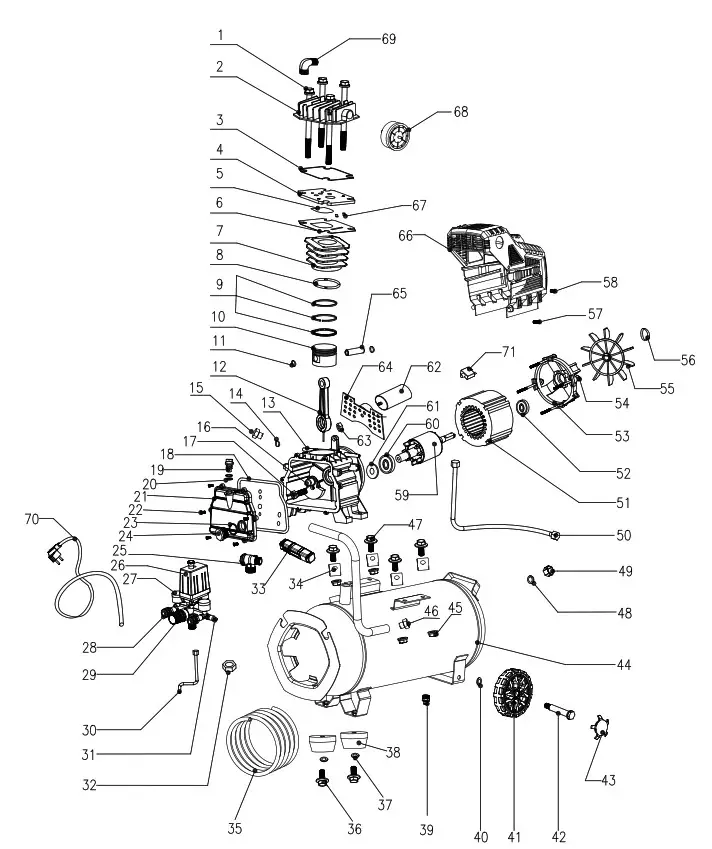
At www.lidl-service.com you can download this and many more manuals, product videos plus installation software. The QR code takes you directly to the Lidl service page (www.lidl-service.com) and you can open your operating manual by entering the article number (IAN) 360588_2010.
CE – Declaration of Conformity
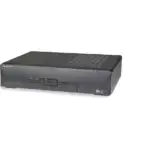 Translation of the original EC declaration of conformity scheppach Fabrikation von Holzbearbeitungsmaschinen GmbH, Günzburger Str. 69, D-89335 Ichenhausen hereby declares the following conformity under the EU Directive and standards for the following article
Translation of the original EC declaration of conformity scheppach Fabrikation von Holzbearbeitungsmaschinen GmbH, Günzburger Str. 69, D-89335 Ichenhausen hereby declares the following conformity under the EU Directive and standards for the following article
Brand : Parkside
Article name: COMPRESSOR – PKO 24 B2
Art.-Bezeichnung: KOMPRESSOR – PKO 24 B2
Art. no.: 3906144974-3906144980; 39061449915-39061449916
Ident. no.: 01001 – 94619
| X | 2014/29/EU | 2004/22/EC | 89/686/EC_96/58/EC | ||
| 2014/35/EU | X | 2014/68/EU | 90/396/EC | ||
| X | 2014/30/EU | X | 2 011/6 5/ E U * |
| X | 2006/42/EC |
| Annex IV Notified Body: Notified Body No.: Certificate No.: |
| X | 2000/14/EC_2005/88/EC |
| Annex V | |
| X | Annex VI Noise: measured LWA = 92.9 dB(A); guaranteed LWA= 97 dB(A) P = KW; L/Ø = cm Notified Body: TÜV SÜD Industrie Service GmbH Westendstrasse 199; 80686 München Notified Body No.: 0036 |
| 2010/26/EC | |
| Emission. No: |
Standard references:
1012-1:2010; EN 60204-1:2018; EN 61000-6-1:2007; EN 61000-6-3:2007/A1:2011; EN 50581:2012;
286-1:1998/A1:2002
This declaration of conformity is issued under the sole responsibility of the manufacturer.
* The object of the declaration described above fulfils the regulations of the directive 2011/65/EU of the European Parliament and Council from 8th June 2011, on
the restriction of the use of certain hazardous substances in electrical and electronic equipment.
Ichenhausen, den 16.02.2021 _____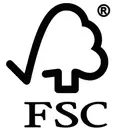 Unterschrift / Andreas Pecher / Head of Project Management
Unterschrift / Andreas Pecher / Head of Project Management
First CE: 2019
Subject to change without notice
Documents registrar: Thomas Schuster
Günzburger Str. 69, D-89335 Ichenhausen


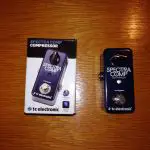
www.fcsc.org
Paper made from recycled material
FSC®C160731
 SCHEPPACH FABRIKATION VON HOLZBEARBEITUNGSMASCHINEN GMBH
SCHEPPACH FABRIKATION VON HOLZBEARBEITUNGSMASCHINEN GMBH
Günzburger Str. 69
D-89335 Ichenhausen
Last information update
Update: 02 / 2021 · Ident.-No.: 360588_2010_3906144977

